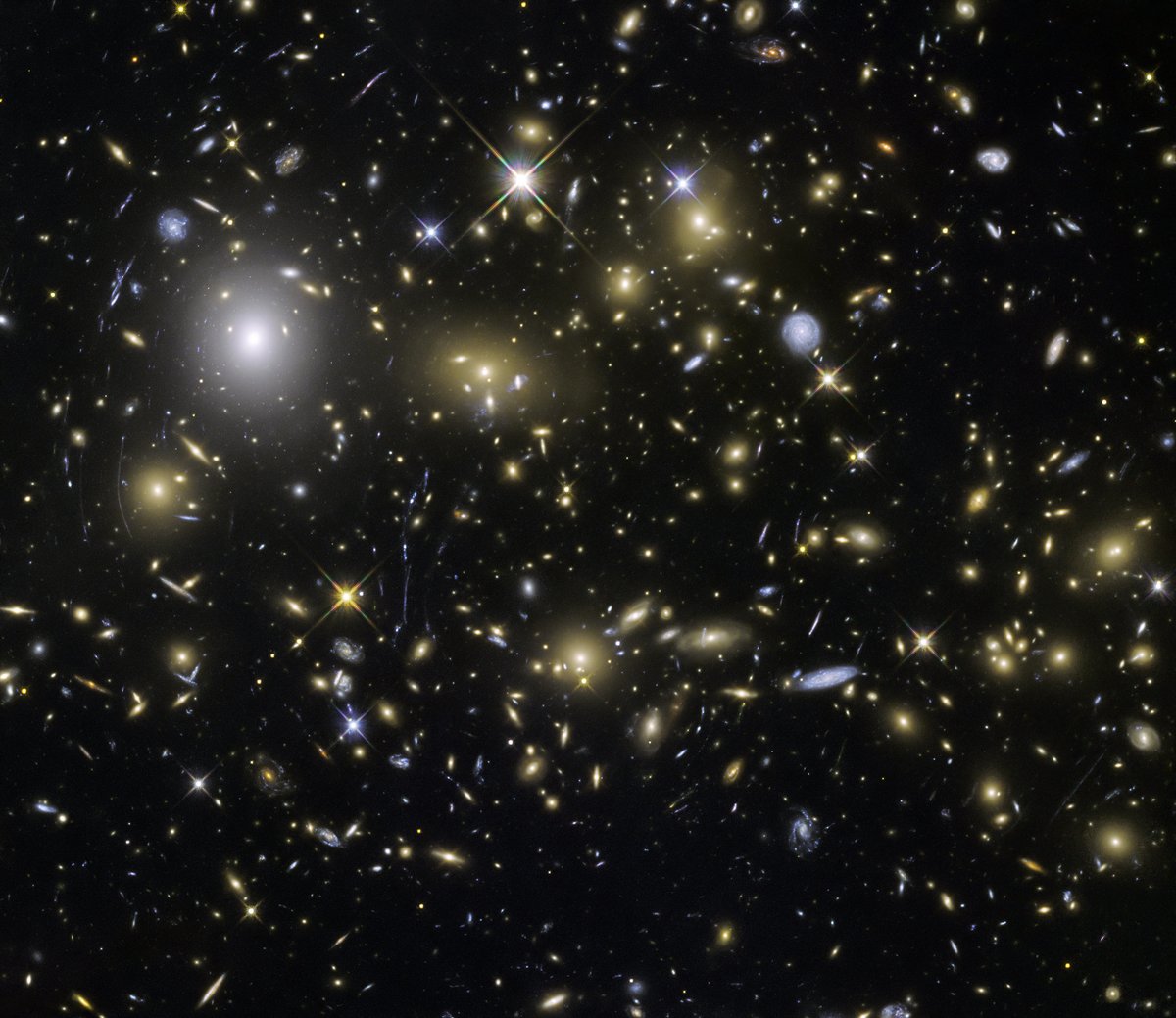
Time for a trip down memory lane…
🧵 Follow along this thread for a mini #DeepFieldWeek history lesson!
First up, we have the original Hubble Deep Field. Imaged in 1995, it took 10 days of exposure time to capture. In it, we could see about 3,000 galaxies! (Portion below)
🧵 Follow along this thread for a mini #DeepFieldWeek history lesson!
First up, we have the original Hubble Deep Field. Imaged in 1995, it took 10 days of exposure time to capture. In it, we could see about 3,000 galaxies! (Portion below)

In 2003 and 2004, Hubble captured a million-second-long exposure to create the Hubble Ultra Deep Field image, which contains about 10,000 galaxies! 🤯
A new camera on Hubble called the Advanced Camera For Surveys made it possible to get such a deep, intricate view.
A new camera on Hubble called the Advanced Camera For Surveys made it possible to get such a deep, intricate view.

Later, to create the Hubble eXtreme Deep Field, Hubble revisited the same patch of sky over a decade for a total of 50 days!
One of the coolest parts? The universe is 13.7 billion years old, and this image spans 13.2 billion years of galaxy development.
One of the coolest parts? The universe is 13.7 billion years old, and this image spans 13.2 billion years of galaxy development.

In 2013, the Frontier Fields project kicked off. This bold multi-year campaign aimed to provide data to aid investigations of dark matter and how galaxies change over time, among others.
Four clusters of galaxies are colliding to form the single cluster seen in this image.
Four clusters of galaxies are colliding to form the single cluster seen in this image.

The Hubble Legacy Field released in 2019.
Within it? Data representing 16 years of observations, 265,000 galaxies, and 13.3 billion years – making it the largest collection of galaxies documented by Hubble.
Within it? Data representing 16 years of observations, 265,000 galaxies, and 13.3 billion years – making it the largest collection of galaxies documented by Hubble.

Whew – we hope that provides a quick snapshot of Hubble's deep field history!
Still, we've barely scratched the surface. Explore more deep field images in our Flickr album! flickr.com/photos/nasahub…
Still, we've barely scratched the surface. Explore more deep field images in our Flickr album! flickr.com/photos/nasahub…
• • •
Missing some Tweet in this thread? You can try to
force a refresh











